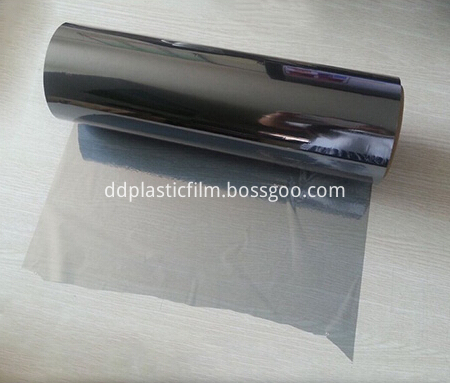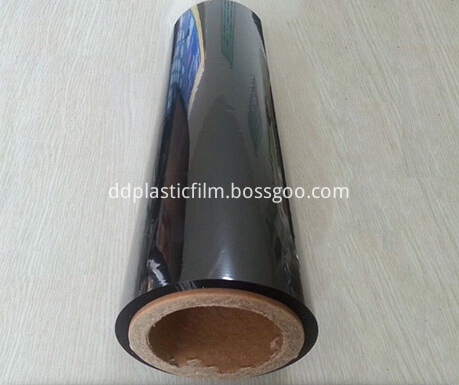The ELISA method is widely used in the determination of various antigens and antibodies. However, there are many influencing factors in ELISA measurement, and there are certain technical requirements in its operation. In addition to the normal reaction in the detection process, sometimes some wrong results are common. The main causes of ELISA measurement error results are: ①specimen factor; ② reagent factor; ③ operation factor. The following is an analysis of some common problems in the operation of ELISA. 1. Sample dilution: ELISA is a highly sensitive reaction. If the serum is not diluted, it will inevitably produce a strong non-specific reaction and false positives. Therefore, the kits for detecting serum antibodies in foreign countries all require that the serum be diluted to an appropriate multiple to reduce non-specific reactions, so that specific antigen-antibody reactions can be fully reflected. The sample dilution ratio of general products is determined through a large number of tests to ensure the sensitivity and specificity of the test. However, some users fail to strictly follow the instructions. For example, some products should be diluted with 10μl samples, and individual users should take 5μl or even 1μl samples for dilution, because the sample is inevitably stained on the nozzle and the precision of the micropipette Insufficient, so the dilution factor of the sample is not accurate, and the test results are problematic. 2. Kit balance: All reagents and slats in the kit should be equilibrated to room temperature (approximately 25 ° C) before the test. Generally, they need to be left at room temperature for more than 20 to 30 minutes. If the equilibration time is too short, the reagent mixing will not be enough, the sample incubation time will be relatively shortened, and the ELISA reaction will be insufficient. In winter when the room temperature is low, the kit can be placed in a 37 ° C incubator for 20 minutes. 3. Mixing of samples and reagents: the samples before and after dilution must be thoroughly mixed, and all reagents must be shaken before adding samples to ensure the uniformity of the test. 4. Adding Samples: In the current ELISA commercial kits, there must be a step of adding samples using a micro-sampler. The key point to note is that the sample should not be added too fast, and should not be added to the upper part of the hole wall. The sample addition is too fast to guarantee the accuracy and uniformity of the micro-sample addition. The non-coating area added on the upper part of the hole wall may easily lead to non-specific adsorption. Splashes can contaminate adjacent holes. When bubbles appear, there is a difference in the reaction liquid interface. Therefore, sometimes a specimen is tested positive with the same kit this time, and the next test is negative, which is often caused by the above sample addition and reagent errors. 5. Incubation: Incubation is the most critical factor affecting the success or failure of the assay in ELISA. ELISA is a solid-phase immunoassay. The antigen-antibody binding reaction is performed on the solid phase. To make the antigen or antibody in the liquid phase completely bind to the specific antibody or antigen on the solid phase, it must be reacted under certain temperature conditions. time. The time required for incubation is inversely proportional to the temperature, that is, the higher the temperature, the shorter the time required. The most commonly used incubation temperature is 37 ℃ and room temperature, followed by 43 ℃ and 2 ~ 8 ℃. Some operators change the manual operation without permission and use their favorite incubation time and incubation temperature, which causes unnecessary trouble. Because different kits have different choices of incubation time and incubation temperature, arbitrarily changing the incubation time or incubation temperature will lead to deviations in the test results. 6. Plate washing: The solid-phase immunoassay technique is a heterogeneous immunoassay technique. It is necessary to separate antigens or antibodies specifically bound to the solid phase from the non-specific components adsorbed during the reaction incubation process by a washing operation to ensure ELISA Determination of specificity. Plate washing is also an extremely critical step for ELISA determination. Do not spill the lotion out of the hole as much as possible; let it stand for 1 minute after adding the lotion. After removing the lotion from the plate hole, be sure to pat it dry; replace the absorbent paper in time, especially the absorbent paper that has been taken with enzyme markers. Discard, otherwise it may affect the test results. 7. Edge effect: In the ELISA assay using 96-well plates, "edge effect" is often found, that is, the peripheral holes are deeper than the central holes. Studies have confirmed that the thermodynamic gradient in incubation may be the root cause. Polystyrene itself is a poor thermal conductor. In the routine ELISA measurement in the laboratory, the plate is placed in a 37 ° C incubator from room temperature (usually around 25 ° C). When the plate is also heated, it may be between the outer peripheral hole and the central hole There is a thermodynamic gradient. Therefore, using a water bath or heating the plate and solution to the incubation temperature (such as 37 ° C) when the reaction solution is added to the wells of the plate, the "edge effect" can be easily eliminated and the repeatability of the measurement can be improved. 8. Color development: color development must be controlled by time, according to the instructions of the kit. Generally speaking, if the color rendering time is too short, the result is low; if the color rendering time is too long, the blank increases or the non-specific color rendering increases. 9. Colorimetric: colorimetric should pay attention to the choice of wavelength. Both TMB as a substrate and OPD as a substrate are used. The colorimetric wavelength of the former is 450nm, and the latter is 492nm. The filter needs to be replaced at any time according to requirements. Therefore, there is a problem that the filter is misused. Secondly, the problem of single wavelength or dual wavelength colorimetric selection. The so-called single-wavelength colorimetry is the colorimetric measurement of the wavelength with the maximum absorption of color development, such as 450nm or 492nm; while the dual-wavelength dual-color measurement is performed at a sensitive wavelength such as 450nm and a non-sensitive wavelength such as 630nm. Once, the absorbance measured above and below the sensitive wave is the sum of the absorbance specific to the color of the sample to measure the enzyme reaction and the absorbance caused by fingerprints, scratches, dust and other dirt on the plate holes; at non-sensitive wavelengths, the wavelength is changed to a certain value , So that the absorbance value of the sample to determine the specific color of the enzyme reaction is zero, and the absorbance measured at this time is the absorbance value of the dirt. Finally, the value given by the microplate reader is the difference between the absorbance value at the sensitive wavelength and the absorbance value at the very sensitive wavelength. Therefore, the dual-wavelength colorimetric measurement has the advantage that it can exclude the influence of the non-specific absorption, fingerprints, scratches, dust, etc. of the microtiter plate itself and the specimens in the plate well on the specific colorimetric measurement absorbance. Because there is a certain degree of uncertainty in the non-specific absorption of a single blank hole in ELISA measurement, that is to say, each measurement or the same measurement of the difference in the position of the blank hole may obtain different absorbance measurement values, so the colorimetric measurement in ELISA It is best to use dual wavelength colorimetry. In summary, although the operation steps of ELISA measurement are very simple, there are many factors that may affect the measurement results, which are distributed in each step of the measurement operation, especially sample addition, incubation and plate washing. In order to help you analyze and find the possible causes of problems in the measurement, the common problems and causes are summarized in the following table. Possible problems and solutions during operation ...
Semi Metallized Pet Film
Other name: Semi metallized PET FILM, Semi transparent PET film,150A electric film ect.
Specification:
Thickness:12MIC, 24MIC,50MIC ,100MIC etc
Width:<2500mm, Other width accept customized
Low OD: 150A , 240A, Other thickness accept OEM
Application :For lamination , For shielding bag, For electric ect.
Shielding Plastic Film,Mylar Electronic Film,Semi Transparent Mylar Film,Pet Electronic Film Shijiazhuang dadao Packaging materials Co , https://www.ddplasticfilm.com


ELISA FAQ
